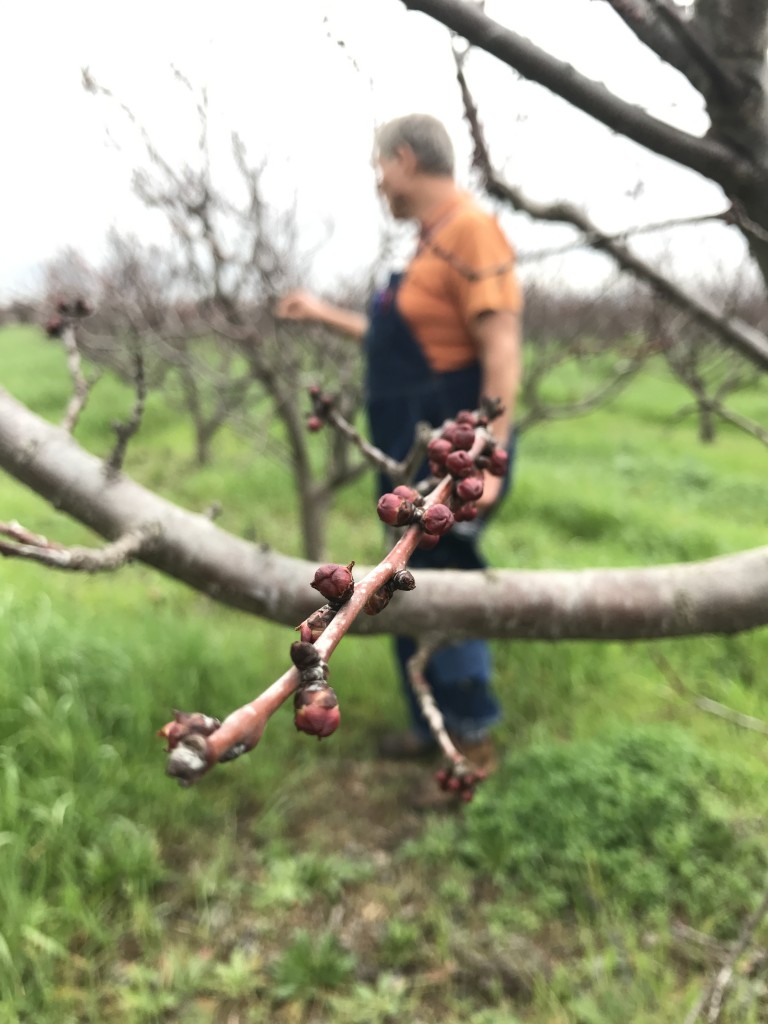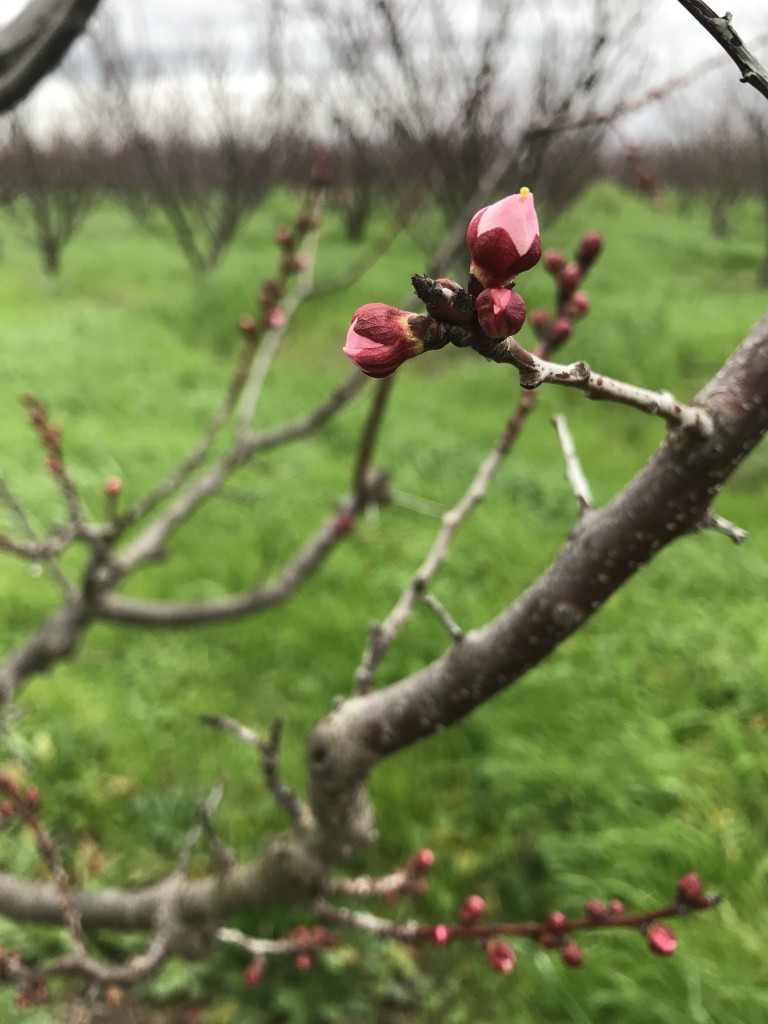
Apricot buds in the red bud stage
Some of you may remember, but 2010 and 2011 were devastating years for our apricot crop at Frog Hollow Farm. You may have tried to block those years from your memory, but those years were real and scary losses for us as a farm. Though we would like to forget, those seasons allow us to grow and refine our practices to ensure a better future for our farm. Early May usually brings an abundance of apricots, marking the beginning of stone fruit. Since 2011 we have had plentiful apricot harvests, but we can never let up and never assume we are in the clear.
What made 2010 and 2011 such devastating years? The worst disease for any stone fruit — brown rot. Brown rot is a fungus that kills the blossoms of stone fruit trees, thus inhibiting the tree from producing fruit. All stone fruit is susceptible to brown rot once the blossoms are open on the tree, but apricots, in particular, are susceptible at the red bud stage. The red bud stage is the stage of growth in which you can see the buds growing or “moving” as the farming world calls it. The buds are on the verge of the popcorn stage or the stage where you can observe the petals of the blossoms starting to become fat and the buds begin to open up. The perfect, classic conditions for brown rot are rainy, wet weather combined with warmth. This past week, we had a Pineapple Express storm come through Frog Hollow. This storm came from Hawaii and brought warmth and an abundance of rain. Many of you may have experienced the floods and damage it caused up and down the coast (and we hope you are all safe!), but at Frog Hollow this storm brought about much anxiety.
Farmer Al awoke early on Wednesday morning with nightmares of 2010 and 2011 spinning in his head. He looked out his window to see a foggy haze with no wind movement. The moisture from the rain the night before was sitting and soaking into the soil with no wind or sunlight to aid in evaporation. The worst part might have been that the ground was too wet to go check the apricot tree conditions and Farmer Al had to patiently await the afternoon to see if his nightmares were coming true.
Walking through the orchard with Farmer Al to check for brown rot is a lot of pressure. You could be witness to devastation or the success of our new processes. On Wednesday afternoon we trudged through the mud and high grass heavy laden with dew drops to analyze the buds. We were looking for brown or white fuzz on the buds that are signs the brown rot spurs are successfully attacking the buds. Thankfully, we saw no signs of brown rot! This is amazing news and signs that our efforts are paying off. Following our 2011 season, we began to create our own on site compost. This compost has changed the entire ecology of our orchard. It has changed the soil, the ground cover, the soil surface, the volunteer weeds, the branches, and the buds themselves. What this means is that the new biological microbial inhabitants of the soil are competing effectively with the brown rot fungus and are reducing the brown rot damage that we have historically seen. We haven’t seen these weather conditions during the winter months in quite some time, so the success we are observing is extremely

Apricot buds in the popcorn stage
hopeful for us and could be revolutionary to the way farmers in the future fight the pesky brown rot fungus. Farmer Al is not aware of any other farms that are using compost as we are to fight this fungus, but we hope that our findings will have lasting impacts.
We are not out of the clear. Farmer Al and his teams will be out in the orchard as soon as possible to spray the trees with compost tea and spread compost on the soil to continue to fight. He will continue to monitor the buds and blossoms throughout the spring, but we are very hopeful for what is to come. We will keep you updated and hope to bring delicious apricots to your home very soon!

 Follow
Follow
